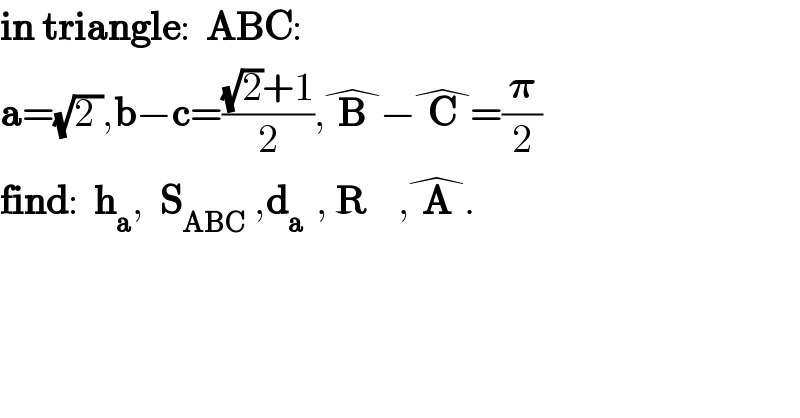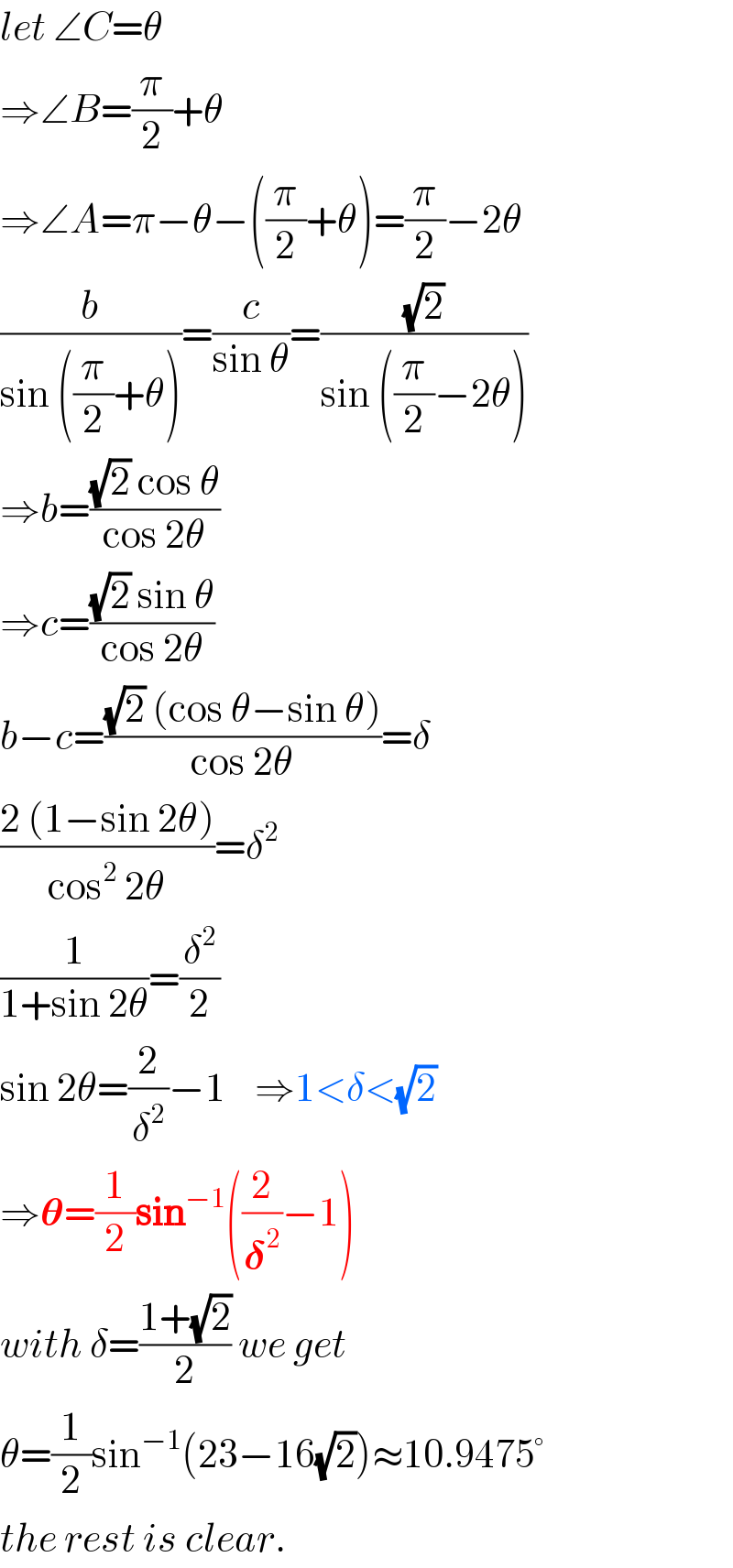
Question and Answers Forum
Question Number 75058 by behi83417@gmail.com last updated on 07/Dec/19

Commented by mr W last updated on 07/Dec/19

Commented by behi83417@gmail.com last updated on 07/Dec/19

Answered by mr W last updated on 07/Dec/19

| ||
Question and Answers Forum | ||
Question Number 75058 by behi83417@gmail.com last updated on 07/Dec/19 | ||
 | ||
Commented by mr W last updated on 07/Dec/19 | ||
 | ||
Commented by behi83417@gmail.com last updated on 07/Dec/19 | ||
 | ||
Answered by mr W last updated on 07/Dec/19 | ||
 | ||
| ||